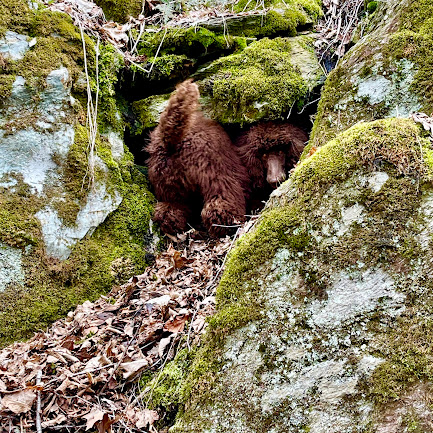April 27, 2022
It is remarkable how the American mind runs to statistics. Consider the number of meteorological observers and other annual phenomena. The Smithsonian Institution is a truly national institution.
Every shopkeeper makes a record of the arrival of the first martin or bluebird to his box. Dod, the broker, told me last spring that he knew when the first blue bird came to his boxes, he made a memorandum of it: John Brown, merchant, tells me this morning that the martins first came to his box on the 13th, he "made a minute of it." Beside so many entries in their day-books and ledgers, they record these things.
John Brown, merchant, tells me this morning that the martins first came to his box on the 13th, See April 17, 1860 ("J. Brown says that he saw martins on his box on the 13th and 14th, and that his son saw one the 8th").
Did not see a linaria the past winter. See March 5, 1853 ("Though this is described by Nuttall as an occasional visitor in the winter, it has been the prevailing bird here this winter. "); March 6, 1860 ("The linarias have been the most numerous birds the past winter.") See also A Book of the Seasons, by Henry Thoreau, The Lesser Redpoll
There are but few F. hyemalis about now; they appear to have gone north mostly on the advent of warmer weather about the 5th of April. See April 8, 1854 (" Perchance after the warmer days, which bring out the frogs and butterflies, the alders and maples, the greater part of them leave for the north and give place to newcomers."); See also April 17, 1855 (" I believe I see a tree sparrow still, but I do not remember an F. hyemalis for two days."); April 24, 1855 (" Have not seen the F. hyemalis for a week") and A Book of the Seasons, by Henry Thoreau, the Dark-eyed Junco (Fringilla hyemalis)
The tree sparrow is still the prevailing bird. Compare April 17, 1855 ("I suspect that most of the tree sparrows and F. hyemalis, at least, went yesterday. So the pleasanter weather seems not an unmixed benefit.") See also A Book of the Seasons, by Henry Thoreau, the Tree Sparrow
I look up, these snowy days, and see purple finches silently feeding on the elms, when I have heard no sound.
Did not see a linaria the past winter, though they were the prevailing bird the winter before.
There are but few F. hyemalis about now; they appear to have gone north mostly on the advent of warmer weather about the 5th of April.
The tree sparrow is still the prevailing bird.
Did not see a linaria the past winter, though they were the prevailing bird the winter before.
There are but few F. hyemalis about now; they appear to have gone north mostly on the advent of warmer weather about the 5th of April.
The tree sparrow is still the prevailing bird.
H. D. Thoreau, Journal, April 17, 1854
I look up, these snowy days, and see purple finches silently feeding on the elms. See April 3, 1858 ("I am surprised by the rich strain of the purple finch from the elms"); April 11, 1853 ("I hear the clear, loud whistle of a purple finch, somewhat like and nearly as loud as the robin, from the elm by Whiting's.”); April 12, 1855 ("I hear a purple finch . . . on an elm, steadily warbling and uttering a sharp chip from time to time"); April 15, 1856 ("The purple finch is singing on the elms . . . ") April 15, 1854 ("The arrival of the purple finches appears to be coincident with the blossoming of the elm, on whose blossom it feeds.") Also see A Book of the Seasons, by Henry Thoreau, Elms and the Purple Finch
Did not see a linaria the past winter. See March 5, 1853 ("Though this is described by Nuttall as an occasional visitor in the winter, it has been the prevailing bird here this winter. "); March 6, 1860 ("The linarias have been the most numerous birds the past winter.") See also A Book of the Seasons, by Henry Thoreau, The Lesser Redpoll
There are but few F. hyemalis about now; they appear to have gone north mostly on the advent of warmer weather about the 5th of April. See April 8, 1854 (" Perchance after the warmer days, which bring out the frogs and butterflies, the alders and maples, the greater part of them leave for the north and give place to newcomers."); See also April 17, 1855 (" I believe I see a tree sparrow still, but I do not remember an F. hyemalis for two days."); April 24, 1855 (" Have not seen the F. hyemalis for a week") and A Book of the Seasons, by Henry Thoreau, the Dark-eyed Junco (Fringilla hyemalis)
The tree sparrow is still the prevailing bird. Compare April 17, 1855 ("I suspect that most of the tree sparrows and F. hyemalis, at least, went yesterday. So the pleasanter weather seems not an unmixed benefit.") See also A Book of the Seasons, by Henry Thoreau, the Tree Sparrow
How remarkable
that the American mind
runs to statistics.
A Book of the Seasons, by Henry Thoreau, Statistics
A Book of the Seasons, by Henry Thoreau
"A book, each page written in its own season,
out-of-doors, in its own locality."
~edited, assembled and rewritten by zphx © 2009-2024
tinyurl.com/hdt-540417






No comments:
Post a Comment